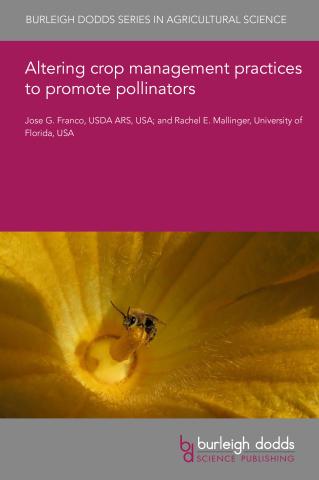Agricultural intensification, or the increase in crop production per unit land area, has resulted in high-input, large-scale monoculture cropping and overall declines in crop diversity in the USA (Aguilar et al., 2015) and greater homogeneity in the crops grown across regions at a global scale (Martin et al., 2019). This has often resulted in agricultural landscapes devoid of the habitat and floral resources needed to sustain pollinators. In addition to a reduction in crop diversity, the intensified use of agrochemical inputs reduces populations of flowering weeds that can provide floral resources for pollinators and introduces compounds into the environment found to be toxic to sensitive pollinator species (van der Slujis et al., 2013). Modern crop production systems are, thus, thought to contribute to declines in pollinator populations that we rely on for the pollination of economically important crops and wild plants.
To address this pressing issue, agriculture must develop practices that diversify the agricultural landscape to enhance the availability of floralresources and habitat within the crop production space. This approach, known as land sharing, is in contrast to the land sparing paradigm where natural lands are set aside for conservation purposes and are distinct management units from agricultural lands (Phalan et al., 2011). The land-sharing paradigm, however, is thought to be a more realistic approach given the demands a growing Altering crop management practices to promote pollinators Altering crop management practices to promote pollinators Chapter taken from: Kevan, P. and Willis Chan, D. S. (ed.), Promoting pollination and pollinators in farming pp. 283–304, Burleigh Dodds Science Publishing, Cambridge, UK, 2023, (ISBN: 978 1 80146 098 9; www.bdspublishing.com) 2 Altering crop management practices to promote pollinators Published by Burleigh Dodds Science Publishing Limited, 2023. population has placed on agricultural lands and the benefits that increased biodiversity has on agroecosystems and agricultural production (Tscharntke et al., 2005, 2012).
Another chapter discusses in more detail the management of field margins, wildflower strips, or other adjacent and surrounding habitat to crop fields that contribute to landscape diversity and enhanced pollinator resources. In this chapter, the focus is on approaches to enhance plant diversity within the crop production space. Approaches by which this can be achieved include in-field practices such as the planting of flowering cover crops between crop rotations, intercropped with cash crops, or in place of a cash crop, planting of diverse perennial forages that also provide floral resources, and maintaining flowering weed communities if they pose little threat to crop production



